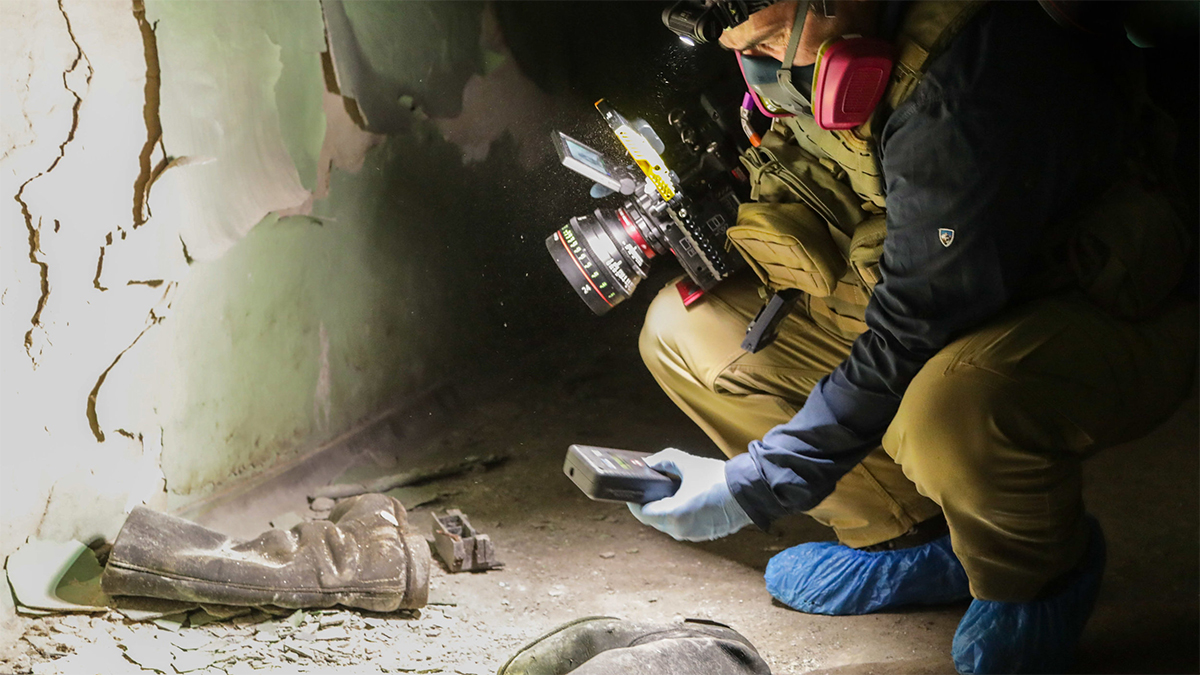
TL;DR
- Cinematographer/photographer Philip Grossman details his experiences adventuring around the globe and teaches you what it takes to reach, explore and capture imagery at some of the world’s most “impossible” places.
- Grossman has the distinction of being the first person to fly a multi-rotor drone in the Chernobyl Zone of Exclusion as part of his work in documenting the aftermath of the nuclear catastrophe.
- He offers tips for shooting in remote locations, including gear, power management, and investing in satellite maps.
Flashlights and wet wipes are just a few of the essential items in the gear bag of award-winning photographer and cinematographer Philip Grossman, whose specialty is shooting in extreme and off-limits locations.
Grossman has been engaged in a long-term project in Chernobyl that led to his involvement in the award-winning HBO series Chernobyl. He also produced and hosted a one-hour episode of the Discovery Science Channel’s Mysteries of the Abandoned entitled “Chernobyl’s Deadly Secrets,” and is working on a documentary about the Soviet Space Shuttle program in Baikonur, Kazakhstan.
“One of the things you need to do if you’re going to get into adventure cinematography, and filming in unique places, is get accustomed to things not being like they are at home and just accept them,” he says. “It’s the journey. And so that’s what makes this all fun.” Learn more from his talk above.

Grossman is both a still photographer and documentary camera operator, usually employing a Canon for the former and RED cameras for video, but occasionally he will use the lightweight RED Komodo and combine the two disciplines.
“I found that by having a different body for doing stills versus motion, it causes your brain to switch gears faster. But at the end of the day you’ve got to figure out what you can carry and fit in your bag to achieve the goal of what you’re trying to capture. I always have my iPhone with me and a GoPro because they’re tiny.”
Grossman has the distinction of being the first person to fly a multi-rotor drone in the Chernobyl Zone of Exclusion as part of his work in documenting the aftermath of the nuclear catastrophe: “The smaller drones the better. Drone footage for me it’s like Tabasco, you just want to splash a little bit into your food. If you just coat your food and everything with it, it loses its pop.”
Managing power in remote locations in the field is a particular skill. One tip (possibly illegal) involves swapping over the stickers on camera batteries so that they look like lower wattage units in order to take several as carry on an airplane.
Another tip is to turn the camera off rather than have it in “sleep” mode for power management. He also carries a USB-C charger for charging using the USB port in cars traveling between destinations.
“You just have to realize that eventually you’re going to run out of power,” he explains. “I have some friends who will go longer than a week and take solar with them but sometimes solar isn’t an option.”
There’s no substitute for preparation, however, when filming in places like off the radar NATO bases.
“Google Maps is your friend. Do not be afraid to call or contact the [US] embassy or the foreign embassy. It is government bureaucracy and will cause you to pull your hair out sometimes but they’re a great resource, and they’re really there to help you.
(Grossman has found in foreign countries that most of them are excited to have Westerners visit, especially in the former Soviet Socialist Republics.)
Do a lot of research, read lots of books, and find obscure books.
“If you’re not familiar with Wikimapia, become familiar with it. Again, great resource. It’s like Wikipedia, but it’s crowd-sourced map information,” he advises. “So if you actually go to Chernobyl, to the city of Pripyat, just about every building has been documented there. Just like Wikipedia, Wikimapia is not 100% accurate, but does give you a good sense of what’s there.”
He also pays for real-time satellite images: “It’s definitely a value.”
Often in tight or blackout situations, Grossman has learned the importance of taking multiple flashlights, which he also supplements with inch-and-a-half glow sticks, “party sticks for raves and necklaces… I got a pack of 100 for about $9 on Amazon. I always keep 10 of those in my bag at all times now because you can crack those, throw them on the ground and they become breadcrumb trails for you.”
He even has thermal scopes for some work and a satellite phone, you know, just in case.
He’ll take tripods provided they are small, compact carbon fiber built with quick-release heads that can fit into a small bag when collapsed.
Insurance is a must, but he always carries cameras with him, and will not check them into a baggage hold.
“A couple of things that I’ve found that helps. One, believe it or not, is I have a Department of Defense sticker that is on my Pelican case and ever since I put that on they have never opened it. I don’t use the TSA locks anymore. I literally just put a zip tie on it,” he says.
“But by all means check with your insurance company. There are different policies that will cover different things. Always have serial numbers for electronic items. If you have the original receipt, that’s great.”
When working with locals, or perhaps as a “gift” to officials, he recommends liquor: “Small little airplane bottles of bourbon is the greatest thing in the world.
“The other fun thing is breaking bread with the locals. We always make a point when we go. Fortunately for me, my filming partner is Polish and so his Russian is far better than mine but we always try to find locals prior to going or when we get there who can help us.”
The key here is respect, even when you have permissions to film: “Always be polite.”

Announcing Our Photo+Video Lab at NAB Show New York, October 25-26
So what is it? It’s a space where the worlds of photo and video converge, where image-based, still photography fuses with motion capture, where you trade in existing for expansive, or simply find the inspiration to try something new.
Best of all, it’s a space to connect — not only with the end-to-end workflow for your craft, but with your community. Content creators. Photographers. Videographers. And so many others through photowalks, meetups, Q&A sessions, demos, exhibits, workshops and more!
Learn more HERE.


